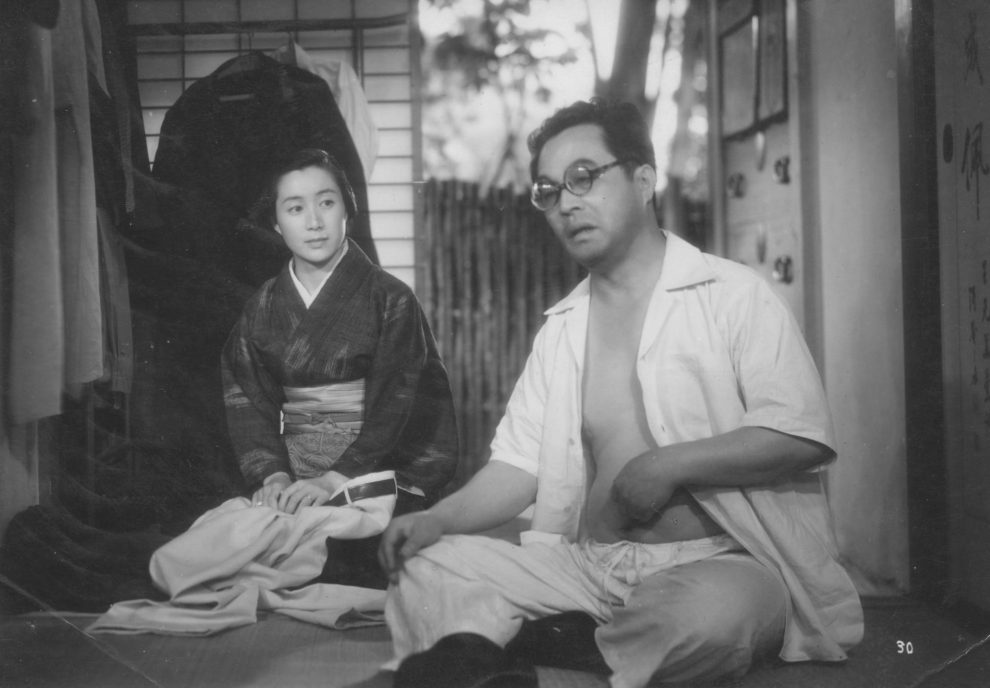Hiroshi Shimizu (1903-1966) began his career during the silent film era and over the next decade would go on to create neo-realist films that portrayed post-war Japan through the eyes of orphaned children, migrant workers, entertainers, or anyone who could be considered an ‘outcast’ by society. In the postwar period, Shimizu began to explore themes such as shifting social structures and loss of tradition. In the 1949 film “Mr. Shosuke Ohara” the audience is taken to the grassy rural fields where a village stands, a common occurrence in Shimizu post war films is that they take place outside of the city. Main character Shosuke Ohara (Denjiro Okochi) is the current head of a wealthy once prestigious family and over the film it is revealed that he has gone bankrupt due to his lazy lifestyle of drinking and gambling. Once an aristocrat from the days past to now having to learn to navigate the changes in the social climate, Ohara serves as a metaphor of postwar Japan’s transition phase to modernization.
With constant and deliberate shots of the Ohara family emblem, Shimizu chronicles how the transition from feudalism to liberalism sees traditional symbols of power or prestige begin to fade. Not exactly a cheerful plot, but the clever Shimizu disguises melancholy with humor, creating a feel-good atmosphere and a wholesome sense of community.
There’s feelings of sentimentality with the steady camerawork taking long shots such as the scenes of the Ohara house being reflected in the background, implying it exists only as an image of nostalgia for the past and creates a sense of distance. The audience sees the house, but doesn’t feel connected to it. There’s an implication of a longing for the past, a time when the Ohara family held more power and the house was a vibrant center of life. Shimizu’s steady camerawork often gave a sense of observation rather than participation in his character’s lives. The camera doesn’t get involved in the action; it simply presents the scene, almost like a museum exhibit. This adds to the feeling of the past being something to be looked at, not lived in. The unilluminated landscapes of the village create a sense of emptiness and decline. This reinforces the idea that the traditional way of life is fading away. The village might have once been bustling, but now it’s almost a ghost town, reflecting the loss of the old social order. When the town gathers to elect a village head, the most obvious choice seems to be to nominate Ohara who has been a prestigious citizen since before the war. Together, these elements paint a picture of a society in transition. The past, symbolized by the Ohara house, is fading into a sentimental memory. The present is empty and uncertain.
Hiroshi Shimizu made over 150 films between 1924 and 1959 with a majority still being lost. This month a Shimizu retrospective organized by the Japan Society offers the chance for viewers to see many of his films, including some that have been lost for decades and never screened before in the US. Get your tickets here.
















